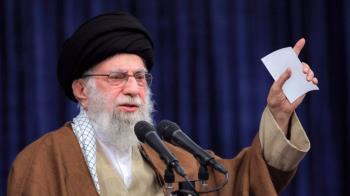Alwaght-After several times US officials said they intend to increase their forces in West Asia and the Persian Gulf regions amid escalating tensions, King Salman of Saudi Arabia has recently agreed with the redeployment of American troops to the Arab kingdom after they left to Qatar in 2003.
On Sunday, NBC news revealed that hundreds of troops, fighter planes, and missile defense batteries were stationed in the Prince Sultan airbase south of the capital Riyadh nearly a month ago and the troops number is expected to reach 500 as the new forces are arriving in the Arab country. The American broadcaster also said that Saudi Arabia has agreed to pay the costs of their deployment and stay.
Over the past decades, Saudi Arabia has been one of the strategic US allies in the region and played as a military, political and economic actor in the protection of the Western interests in the region in return for wide-range military and diplomatic cover from the West. The deployment comes as the American forces 16 years ago left to Al-Udeid airbase in Qatar. The redeployment has sparked some speculations and questions of the political analysts who seek the real reason behind the US measure at the present time.
US bases in Saudi Arabia
Since 1990, Saudi Arabia hosted thousands of US forces and military facilities on its soil. The oil-wealthy monarchy paid for over 50 percent of the costs of building the bases accommodating the American forces. Before the 9/11 attacks, Washington had 13 special-purpose military bases in Saudi Arabia. Additionally, 66 military bases belonging to the Saudi Arabian armed forces were available for Americans’ use. The central command of the American forces in the absolutely-ruled kingdom was headquartered in Prince Sultan airbase which also hosts U-2s, high-altitude reconnaissance aircraft.
Other Saudi bases at the American forces’ disposal are King Abdulaziz airbase in Dhahran, King Khalid airbase in Riyadh, King Faisal airbase south of the country, King Fahad airbase, Prince Abdullah bin Abdulaziz airbase in Jeddah, King Abdulaziz sea base in Dammam, and a naval base in Al Jubail, a city in Eastern Province. These bases stayed active despite the fact that the American military presence in Saudi Arabia in practice was scaled down after May 2003. When the US invaded Iraq in 2003, some 300 American aircraft of various types flew from various Saudi airbases. Riyadh permitted them for free flights in its skies. It also paid for the US-operated military bases on its soil.
American-Saudi goals behind redeployment
Reasons behind US forces deployment into Saudi arabia can be examined from two aspects. One aspect is the recent eruption of tensions in the Persian Gulf region with Iran. The US president over the past few months reinstated the economic sanctions on Iran, pressed for forcing to zero Iran’s oil sales, amassed his forces in the region and very recently pushed for a sea alliance patrolling for protection of commercial ships after a string of oil tanker incidents in the region. All these actions are sparking concerns about the intensification of the regional crisis. Certainly, in the middle of such a situation, the White House counts on its bases in Qatar, Turkey, Iraq, Bahrain, Kuwait, and Oman. But the Iranian show of military strength and firm response to the American threats have made the region states to hesitate about any indirect contribution to the US pressures against Iran like giving Washington permission to use their soil in any anti-Iranian war. They instead try to defuse the tensions and prevent another challenging situation. Odds are that the Americans, aware that Oman, Qatar, Iraq, Turkey, the UAE, and Afghanistan, do not want to see another war, are eyeing to promote the support to their forces in another country. Saudi Arabia looks to be the ideal place presently.
But Riyadh’s welcome to the return of the American forces and paying for their costs do not only reflect the Saudi-American alliance or the kingdom’s foreign policy. The move has a domestic function for the Saudi rulers. Over the past decade, they have grown extensively worried about the spread of the Arab uprisings and discontent to their country. That drives them to preventive actions. While the country is seeing new pro-reform generation seeking political and social freedoms and the economic outlook is not promising due to the heavy costs of Yemen war and Riyadh’s interventionist foreign policy in the region, the leadership, on top of it the Crown Prince Mohamed bin Salman, tries to fine-tune the conditions by giving some social freedoms and paving the way for attraction of foreign investment through launching the Vision 2030 initiative, an ambitious roadmap unveiled by Prince Mohammed in 2016 and aimed at reducing the kingdom’s reliance on oil income.
But the signals emanating from Saudi Arabia are far from suggesting any improvement at home in favor of the leadership. Not only there has not been any uplift to the legitimacy of the ruling family in the Saudi public’s eyes but also the situation worsened for the leaders as a new layer, the religious conservatives opposing the Western-style reforms of the crown prince, has joined the opposition. Add to this the rise of opponents to Prince Mohammed from the royals and protests of the minorities like the Shiites that find the reforms largely sham.
These all herald only a wider political confrontation in the future. That is probably the main reason the king and his son have brought back the US forces who seem to have a mission to provide security shield to the leadership in case of outbreak of protests and even a rebellion. But such a move, with respect to the small number of the US troops, largely serves symbolic and propagandistic aim lacking the potentials to change the equations to the favor of its designers.



























